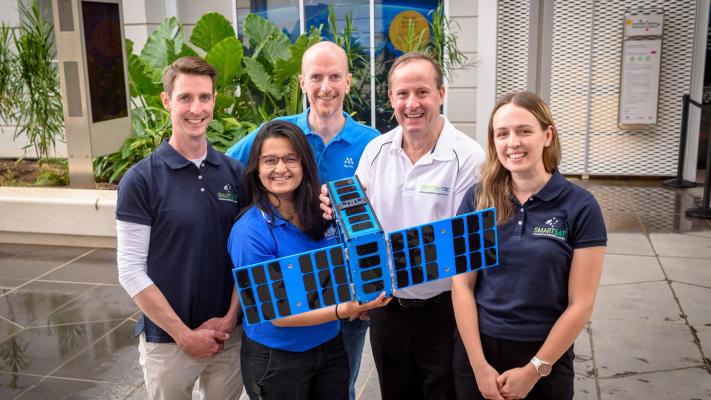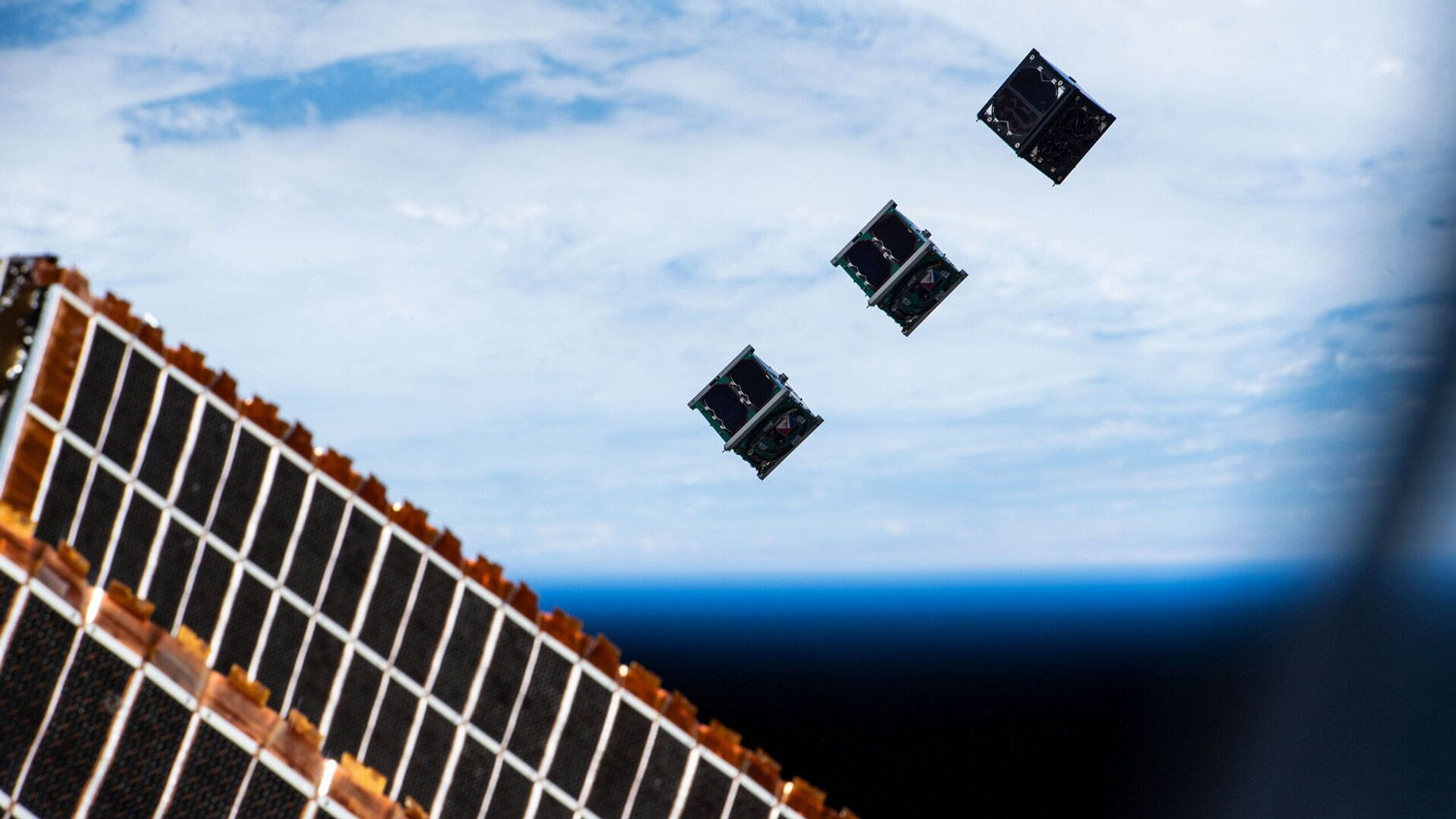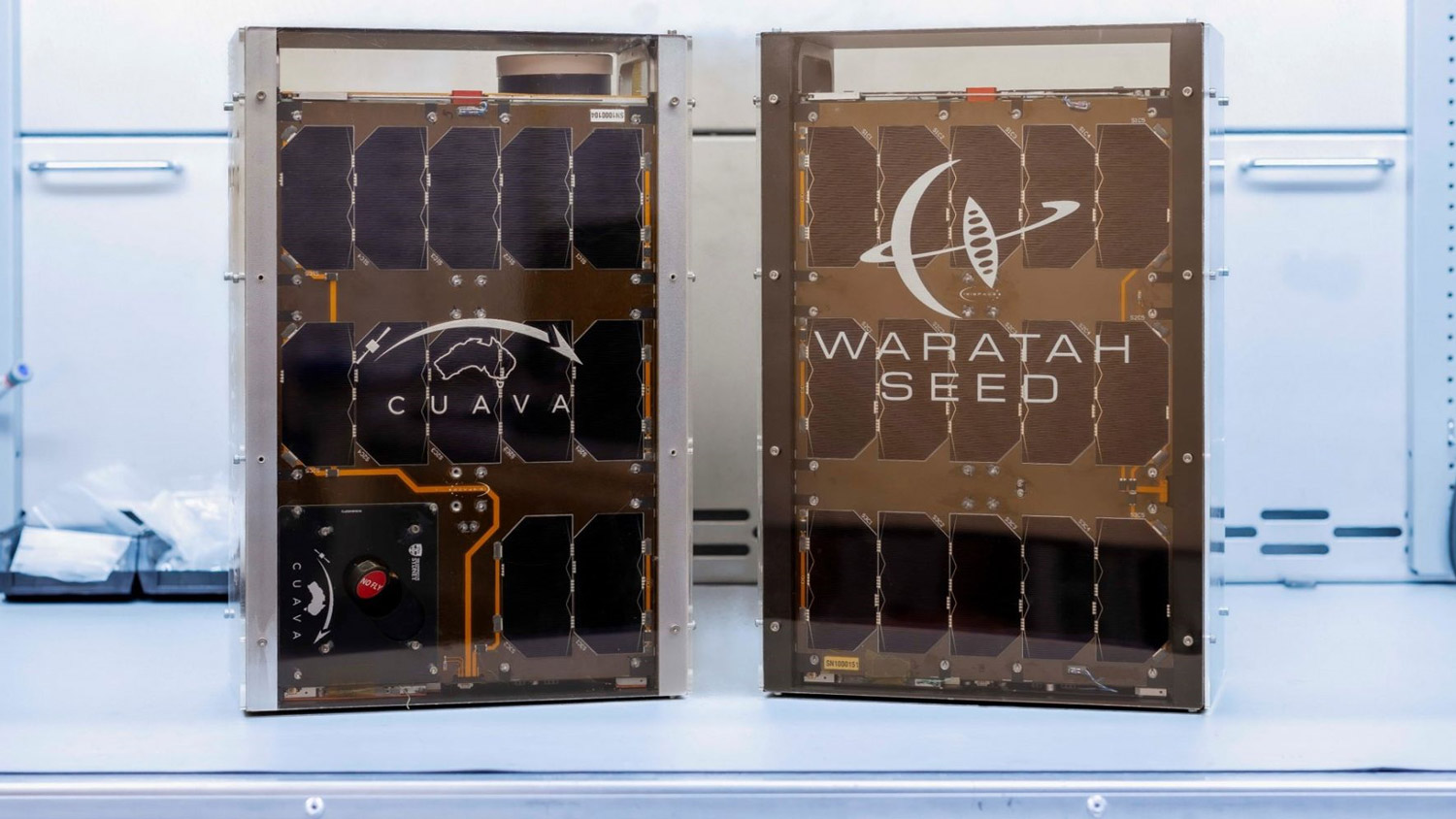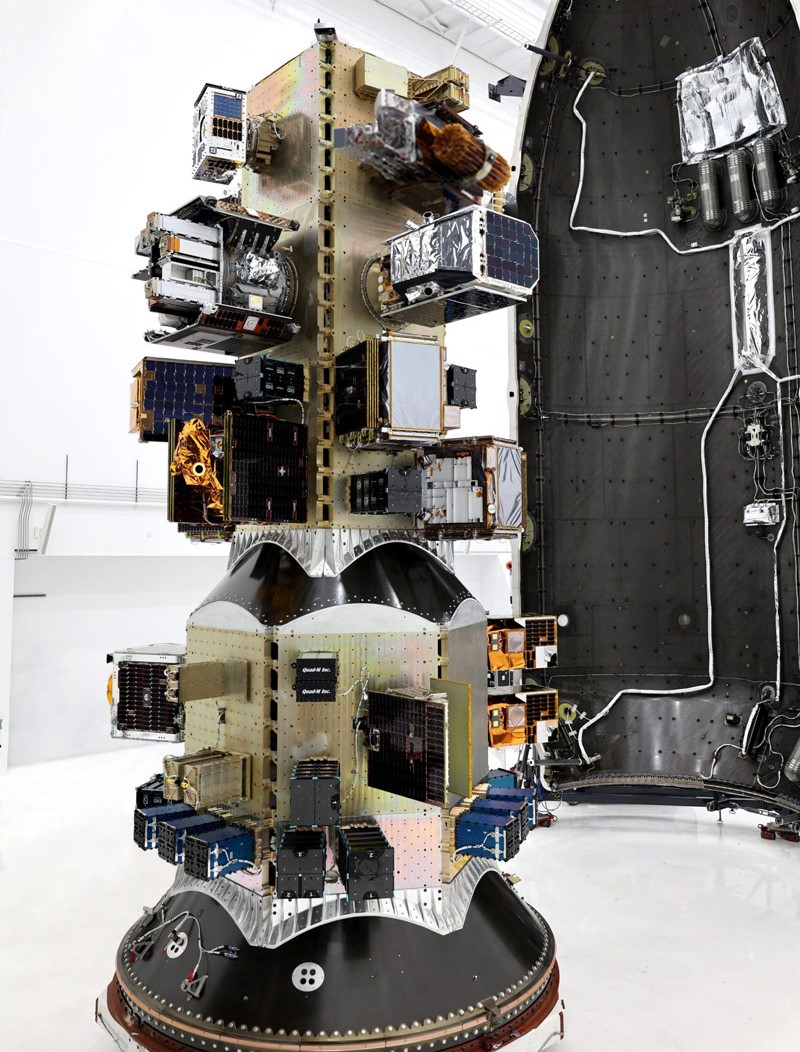It’s a sign of Australia’s growing space capability that the capacity and enthusiasm to launch spacecraft is reaching beyond the realms of Federal government and major private investment.
It’s now common to see satellites being funded by state and territory governments, showcasing forward-looking technology features with local design and construction.
And, in a landmark moment for the Australian space industry, six of them launched into orbit within a fortnight in August.
Read more about
Read more about
This is the culmination of years of collaboration between industry, academia and government – demonstrating what is possible when we draw on every segment of the national space sector.
~ Enrico Palermo, Head of the Australian Space Agency
Binar: WA breaks into space
The first of the launches was a trio of CubeSats from the Binar program at Curtin University in Western Australia, which departed Florida’s Kennedy Space Center in the early hours of the Australian morning on August 5.
Back in 2021, the Binar program – named after the Noongar word for ‘fireball’ – produced WA’s first homegrown satellite, supported by the WA Government. Binar-1 flew with all its systems integrated into one single printed circuit board; a technological accomplishment it shares with only a handful of other satellite models around the world.
With further design refinements made since 2021, the trio of Binar-2, Binar-3, and Binar-4 represents the complete realisation of the Curtin team’s 1U small satellite platform. The design now includes triple communications redundancy and a ‘plug and play’ payload module that allows easy swapping of payloads between missions.
The trio of satellites is also carrying CSIRO instruments to test new radiation shielding materials, and a demonstrator S-band radio transmitter from Perth company AVI.
Professor Phil Bland, Principal Investigator on the Binar program, is pleased with the capability and versatility of the design his team has been able to create in-house.
“We build it all ourselves… that gives us a lot of freedom to help the local ecosystem,” Professor Bland says.
“We can help local industries like AVI test tech in orbit… and, it means that now we can pivot to focus on payload R&D, in the knowledge that we can fly it and test whenever we want.”
Professor Bland is also proud of the career pathway Binar has created for budding space professionals in WA.
“We help high school students develop their own payloads to fly on Binar… they can come to Curtin and do Space Systems Design, then Honours and internships with the Binar program,” Professor Bland says.
“By the time they graduate, they’ll have payloads developed by them flying in scheduled missions… that’s quite something to have on your CV as a recent graduate.”
“I think we’ve shown the value of blue-sky research, and science missions, as a motivating force for those young engineers… our folks bounce out of bed and put in long hours, because they want to go to the Moon.”
Those lunar ambitions could be fulfilled as early as 2030, by which time the Binar team hopes to have launched more 1U satellites and a 12U demonstration platform. Those missions will position the team to launch the 12U-sized Binar Prospector into low lunar orbit – where it will use an infra-red camera and magnetometer to search in high resolution for resources of interest beneath the Moon’s surface.
Waratah Seed: NSW’s ticket to ride
Over in New South Wales, there’s been hot competition to win a round-the-world flight.
The prize in question was a ride aboard Waratah Seed, a 6U CubeSat funded by the NSW Government to test and demonstrate NSW-developed payloads in space. WS-1 took off from California’s Vandenberg Space Force Base on the Australian morning of August 17 with Space X’s Transporter-11 mission.
The project was led by the Australian Research Council-funded Training Centre for CubeSats, UAVs, and their Applications, known as CUAVA. The centre worked with its industry partners to develop the satellite and help prepare the chosen payloads for flight – while also launching its own tech-packed demonstrator satellite, CUAVA-2, on Transporter-11.
CUAVA Director Professor Iver Cairns, who is based at the University of Sydney, says the selection of technology on Waratah Seed includes eight payloads and technology demonstrators, as well as a locally-made spacecraft software system and payload computer.
“The two large payloads are a novel heat transfer technology experiment and demonstration from the University of Technology Sydney and Mawson Rovers, and a GPS reflectometry experiment from the University of NSW,” Professor Cairns says.
“Then we have an edge computing solution from Spiral Blue, advanced perovskite solar cells from Euroka Power, advanced silicon solar cells from Extraterrestrial Power, a Contactile materials demonstrator from Sperospace, a biomaterials testing package from Dandelions, and an electropermanent magnetorquer from Deneb Space, CUAVA, and University of Sydney.”
“Finally, we have the electron density and space debris experiment ‘EDDI’ from CUAVA and the University of Sydney.”
The technology-packed CubeSat is set to help the NSW space industry take a big step forward – while also carrying great potential to give back to our lives on Earth.
“What excites me most about the WS-1 mission is helping create space heritage for novel technologies and instruments,” Professor Cairns says.
“Many of these technologies will also provide novel data that may lead to new services and knowledge – for instance, space debris maps and better knowledge of our space environment, understanding sea state and soil moisture, and heat transfer technologies.”
“This is NSW's first satellite with direct government funding, so it is awesome for us to do this.”
Kanyini: SA’s tour-de-force in Earth observation
Blasting off alongside Waratah Seed on Transporter-11 was its South Australian counterpart, Kanyini. Its name, chosen by local school students, is a Pitjantjatjara word that refers to the connectedness Indigenous Australians have with family, land, creation, and spirit.
The satellite was designed and built entirely in Adelaide through a collaboration between the SA Government, the SmartSat CRC consortium, Inovor Technologies, and Myriota.
It carried two payloads into orbit: an Internet of Things (IoT) communications receiver from Myriota, and the HyperScout2 from Dutch company Cosine, which combines hyperspectral and thermal imaging technology with data processing and AI capabilities in one unit.
Nick Manser, SmartSat’s lead engineer on the Kanyini project, says the technology can benefit Earth in a wide variety of ways.
“Collecting this hyperspectral data from space is cutting-edge technology that will help power research in areas such as water quality, land management, bushfire monitoring, and much more,” Nick says.
“Kanyini will also be used to demonstrate new capabilities which make use of data processing on-board the satellite, to reduce the delay between an observation and sending actionable insights back down to Earth.”
This means that by using the HyperScout2, Kanyini can take a picture of Earth, immediately use AI algorithms to identify areas of significance in the picture (e.g. bushfire smoke), and then quickly report those findings to operators on the ground.
The Myriota IoT payload on board also makes it possible for Kanyini to provide multi-sensor fusion – where ground-based measurements are combined with the satellite’s observations in space to enhance the quality of the results.
Nick is proud to see Kanyini demonstrating the ability of South Australia’s space sector to design, build, and operate spacecraft.
“It is exciting to see the project come to fruition after a lot of hard work and perseverance by the team,” Nick says.
“But I am even more excited for future missions, which can look to Kanyini for inspiration of what Australia can achieve in space.”
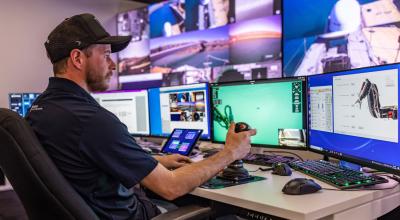
Industry showcase
Australian space innovations making an impact
Main image caption: Some of the Kanyini team members with a model of the satellite | Credit: SmartSat CRC

